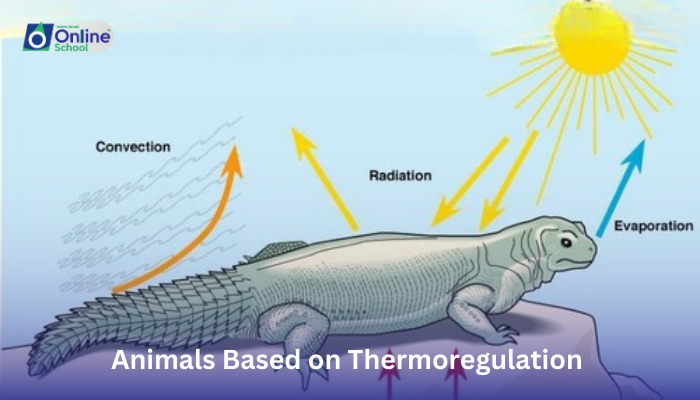
Learning Outcomes:
i. Define poikilothermy and homeothermy and differentiate between them.
ii. Explain the mechanisms of thermoregulation employed by poikilothermic and homeothermic animals.
iii. Analyze the advantages and disadvantages of each thermoregulation strategy.
Introduction:
Imagine venturing out on a cold winter day. You shiver and bundle up to maintain your body temperature. Unlike you, some animals can bask in the sun or burrow underground to achieve the same goal. This ability to regulate body temperature, known as thermoregulation, varies across different animal groups. In this lesson, we will explore the classification of animals based on their thermoregulation capabilities, focusing on poikilotherms and homeotherms.
i. Poikilotherms vs. Homeotherms
Animals can be broadly categorized into two groups based on their ability to maintain a constant internal temperature:
Poikilotherms: (meaning "variable temperature") These animals have limited ability to regulate their body temperature. Their internal temperature fluctuates significantly with the surrounding environment. Examples of poikilotherms include:
Reptiles (lizards, snakes, turtles)
Amphibians (frogs, toads, salamanders)
Fish
Insects
Most invertebrates
Homeotherms: (meaning "constant temperature") These animals maintain a relatively constant internal temperature regardless of the external environment. They possess efficient thermoregulatory mechanisms to achieve this feat. Examples of homeotherms include:
Mammals (humans, dogs, cats, whales)
Birds
ii. Thermoregulatory Mechanisms:
Poikilotherms and homeotherms utilize various mechanisms to manage their body temperature:
Poikilotherms:
Behavioral adaptations: They rely heavily on behavioral adaptations to regulate their temperature. For instance, lizards bask in the sun to warm up and seek shade to cool down.
Physiological adaptations: Some poikilotherms have limited physiological adaptations, such as changing color or adjusting blood flow to specific body parts.
Homeotherms:
Metabolic heat generation: They generate heat internally through metabolic processes.
Insulation: They possess structures like fur, feathers, or blubber to retain heat.
Behavioral adaptations: They also use behavioral adaptations like panting, shivering, or seeking shade to regulate temperature.
iii. Advantages and Disadvantages of Thermoregulation Strategies
Each thermoregulation strategy comes with its own set of advantages and disadvantages:
Poikilotherms:
Advantages: They require less energy to survive compared to homeotherms, making them efficient in resource-limited environments.
Disadvantages: They are more susceptible to fluctuations in environmental temperature, limiting activity levels and geographical distribution.
Homeotherms:
Advantages: They can maintain a constant internal temperature, enabling sustained activity levels and survival in diverse environments.
Disadvantages: They require more energy to maintain their body temperature, increasing food requirements and potentially limiting their survival in resource-poor environments.
Understanding the classification of animals based on thermoregulation provides valuable insight into their adaptations and ecological niches. While poikilotherms are more energy-efficient, their temperature dependence restricts their activity and distribution. Homeotherms, on the other hand, have greater flexibility but require greater energy expenditure. Both strategies demonstrate the remarkable diversity of adaptations that animals employ to thrive in a dynamic environment.